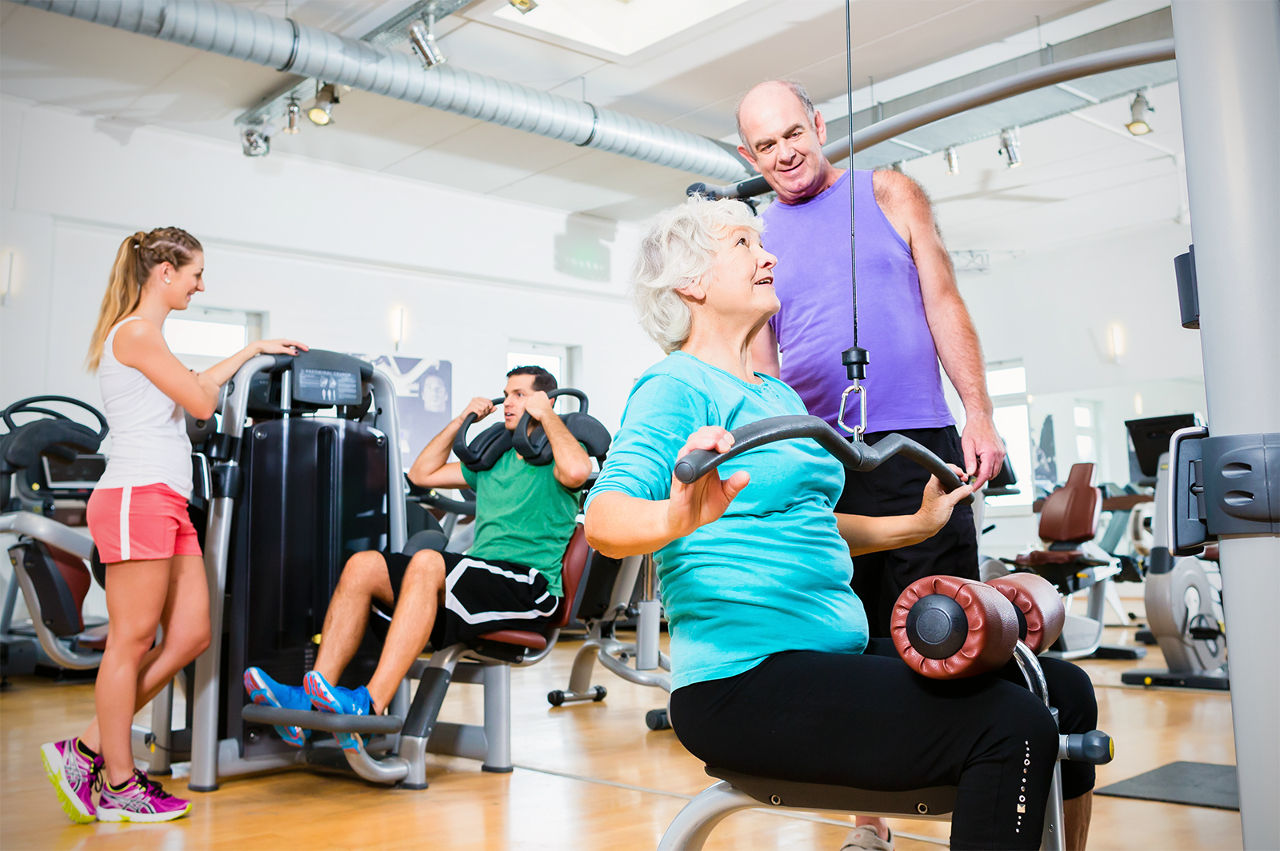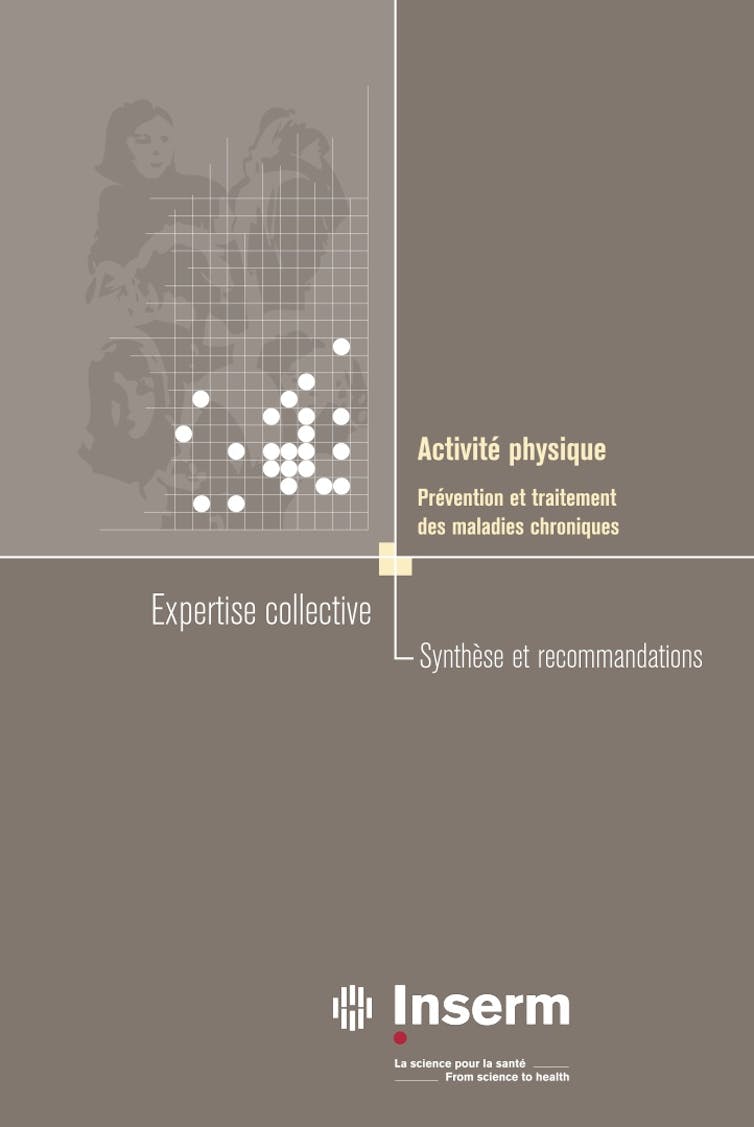Chronic illnesses: fighting them better through physical activity
Cardiovascular diseases, cancers, respiratory disorders, diabetes, depression, neurodegenerative diseases... Today, one French person in three suffers from a chronic illness. This proportion rises to three out of four over the age of 65.
Gregory Ninot, University of Montpellier

And the number of people affected is growing all the time, due to an ageing population, longer life expectancy and early detection.
Having a chronic illness increases the risk of complications, new illnesses, dependency and social insecurity. In addition to the suffering of sufferers, these pathologies are placing an ever-increasing burden on the healthcare system and families.
On February 14, Inserm published an unprecedented report on the importance of physical activity in the prevention and treatment of chronic diseases. This collective expertise, conducted according to a rigorous process established by Inserm, took three years to complete. A multidisciplinary group of 14 experts analyzed over 1,700 bibliographical references on eleven common chronic diseases. The experts drew on cohort studies, experimental studies in animals and humans, and clinical trials published in the world's leading scientific and medical journals.
Their conclusion is simple: the benefits of adapted physical activity programs clearly outweigh the risks, whatever the age or state of health of the participants. Here are the main conclusions to be drawn from this research.
The vicious circle of physical and psychosocial deconditioning
Over time, the repercussions of chronic diseases often go beyond the initial "simple" organic damage. Complications may arise as the disease progresses, or as a result of the side-effects of treatment. Gradually, other disorders begin to appear, albeit discreetly.
Added to this is a tendency to rest and withdraw. Patients gradually enter a vicious circle of physical and psychosocial deconditioning. This process leads to physical inactivity.
For example, patients with chronic obstructive pulmonary disease suffer from shortness of breath on exertion (dyspnea), which plunges them into a vicious circle of deconditioning. To avoid shortness of breath, these sufferers become sedentary. Lack of exercise makes them even more susceptible to dyspnea. The slightest effort seems insurmountable, leading to disproportionate fear and loss of confidence. Everyday actions become difficult to perform. Gradually, metabolic, muscular and bone disorders set in. Depression looms, quality of life and lifespan deteriorate...
The vicious circle of deconditioning severely affects the 20 million French people weakened by a newly diagnosed chronic illness, and even more seriously those whose disease is advanced. This phenomenon can be halted by a program of adapted physical activity, which enables patients to regain awareness of their abilities and improve them.
Doing everything possible to facilitate the active mobility of chronically-ill people, by designing adapted facilities, making public and sports areas more accessible, and promoting the health benefits of regular physical activity, has become a priority for an ageing French population that is increasingly exposed to chronic diseases.
Beyond prevention
Research conducted by Inserm shows that, in the case of heart disease, cancer, respiratory disease, joint disease, diabetes, stroke or depression, adapted physical activity programs are effective and safe.
Prescribed by doctors, personalized and tailored to patients' lifestyles, applied by trained professionals, they improve quality of life, reduce symptoms, prevent the onset of new pathologies and reduce unscheduled hospitalizations.
These specific programs do not work in opposition to conventional treatments (surgery, drugs, medical devices, etc.), but rather complement them. In some cases, such as cancer, they even enhance them (e.g., as a preparatory act for surgery, to reduce chemotherapy toxicity).

Ten concrete points to remember
What are the 10 practical lessons to be learned from this collective expertise?
1. Prescribe early
If the benefits of adapted physical activity programs are proven for severe chronic illnesses, medical prescription, particularly by general practitioners, should be made as soon as the illness is announced. Especially since the regulatory and procedural elements are now available respectively with the 2016-1990 decree and the HAS guide published in 2018. Physicians now have a new range of relevant and effective treatments in their therapeutic arsenal, which they are empowered to deliver appropriately in their patients' individual healthcare pathways.
2. "Primum non nocere" rather than "citius, altius, fortis"
"First, do no harm" rather than "faster, higher, stronger": adapted physical activity programs must guarantee maximum safety for chronically ill participants, and not seek athletic performance against other people or the stopwatch.
3. Respect the right dose-response
The frequency, duration, intensity, nature and context of practices must be specific to a given disease, and focused on a main health objective (for example, the anti-fatigue effect during breast cancer treatment).
4. Physical activity is an effective complementary treatment
Adapted physical activity programs, validated and continually improved by science, are part of non-drug interventions (NDI). They directly improve the quality of life of chronically ill patients, who feel a direct benefit. Studies show significant effects on life expectancy (31% reduction in premature mortality in chronic obstructive pulmonary disease, which affects 1.5 million French people, for example). Prevention of recurrence is also improved (-38% in breast and colon cancer, for example), as is the rate of recovery (41% remission rate equivalent to that of antidepressants and cognitive-behavioural therapies in mild to moderate depression, for example).
5. Use digital solutions to quantify activity
The massive arrival of digital solutions for measurement (e.g. connected watches), traceability (e.g. digital logbooks) and evaluation (e.g. impedance scales for body composition) consolidates the data collected by questionnaires. These data help to advance the specialization of programs in research and their personalization in clinical routine.
6. Maintain motivation
Chronically ill people are more likely to drop out of adapted physical activity and active mobility programs. The Inserm report takes stock of possible solutions to combat this drop-out. These include freedom of choice (in line with therapeutic invariants), emphasis on pleasure, and support from "patient partners". Paradoxically, taking ownership of the disease (and finally making sense of it) can be a trigger for a practice that becomes part of a lifestyle habit, rather like brushing your teeth every night before going to bed.
7. Clinical research is accelerating, going global, and needs to be encouraged
The exponential acceleration of clinical research and innovation in this field around the world over the last twenty years should encourage young researchers in the life sciences, humanities and technologies to get involved.
8. Awareness-raising and training are essential
Raising awareness among the general public and improving training in the initial and ongoing curricula of healthcare professionals (e.g., by including compulsory courses in doctors' curricula) and physical activity professionals (assessment, programming, follow-up, safety, therapeutic alliance, motivational approach) are going to be essential pillars following the abundance of evidence from clinical and interventional studies.
9. Physical activity is a vector for savings and jobs
Economic data exists, particularly in other countries, to support the use of adapted physical activity programs as a means of limiting healthcare costs and out-of-pocket expenses for families. Physical inactivity costs France 1.3 billion euros every year, much of it avoidable. Clinical trials are beginning to show favorable cost-efficiency ratios.
10. A lever for the transition of the healthcare system:
The development of physical activities for the chronically ill illustrates the migration of our healthcare system from "cure" to "care". Adapted physical activity programs are integrated into the various stages of a patient's health pathway, as a complement to other treatments. The only way to respond to complex illnesses is to combine appropriate therapies and preventive actions.
This Inserm collective report is of the utmost importance. As was the case with smoking prevention a few years ago, we will no longer be able to say that we didn't know what measures to implement to improve the situation of the chronically ill...
All that remains now is to take action to implement and reimburse these non-medication interventions (NMIs). This is no longer a question of science...![]()
Gregory Ninot, Professor of Health, Psychology and Sports Science, University of Montpellier
This article is republished from The Conversation under a Creative Commons license. Read theoriginal article.